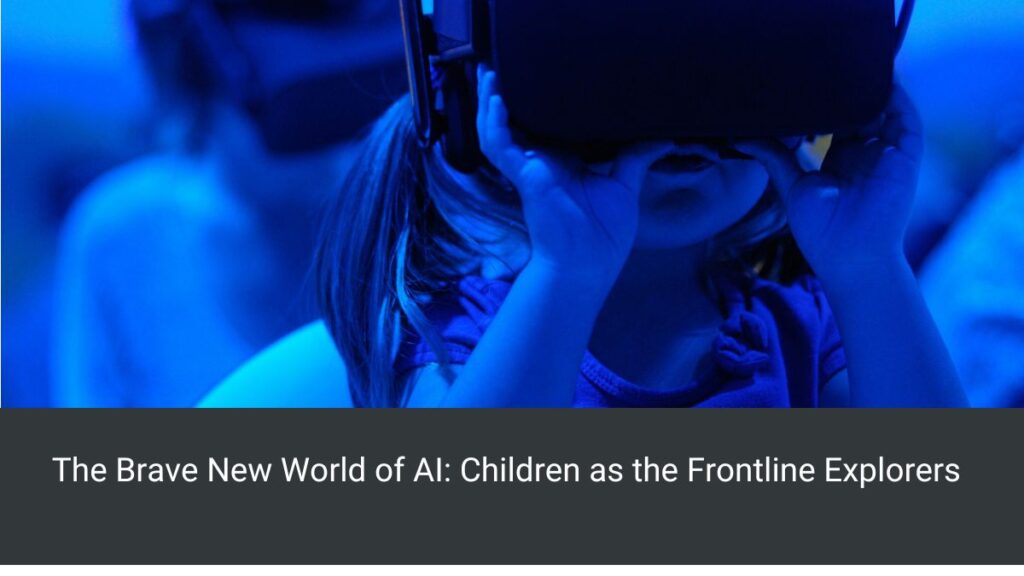A Generational Shift in Technology Adoption
In a remarkable turn of events, children are once again at the forefront of a technological revolution, this time as the pioneers of artificial intelligence (AI). Just as they were the early adopters of social media, today’s youth are becoming the guinea pigs for the integration of generative AI into their daily lives.
The Los Angeles Unified School District, the second-largest public school district in the United States, has taken a bold step by introducing “Ed,” an AI-powered learning platform that includes a chatbot accessible to students and parents alike. This digital assistant, represented by a smiling sun, can answer questions about courses, grades, and attendance, while also providing optional educational activities.
Superintendent Alberto M. Carvalho embraces this move, recognizing the inevitability of AI’s presence. “AI is here to stay. If you don’t master it, it will master you,” he states, emphasizing the importance of empowering teachers and students to navigate the benefits and challenges of this technology.
The Integration of AI into Children’s Lives
AI’s influence is permeating various aspects of children’s lives, from educational tools like Ed to popular apps like Snapchat, which offers a ChatGPT-powered chatbot called “My AI.” Even tech giants like Google, Apple, and Meta are weaving generative AI models into their products, ensuring that kids encounter AI in multiple facets of their digital experiences.
Chromebooks, the affordable laptops used by millions of K-12 students nationwide, are also receiving AI upgrades, further cementing the technology’s presence in the classroom. Meanwhile, opportunistic content creators are leveraging AI to generate synthetic videos for kids on YouTube, opening up a new frontier for monetization.
The Promise and Perils of AI for Children
As children dive headfirst into this AI-powered world, they are poised to uncover its true potential and limitations. Mizuko Ito, a researcher at UC Irvine, acknowledges this reality, stating, “It is kind of a social fact of nature that kids will be more experimental and drive a lot of the innovation in how new tech is used culturally.”
However, this exploration comes with its own set of challenges. Educators and parents alike have expressed concerns about students relying too heavily on AI for schoolwork, potentially undermining their ability to develop essential writing skills. Additionally, the potential for biased or factually incorrect responses from chatbots, as well as privacy concerns surrounding the use of children’s data to train these models, cannot be ignored.
Alarmingly, AI has also enabled new forms of adolescent cruelty, with incidents of fake nude photos of classmates generated using generative AI circulating in schools. This issue has become so widespread that top AI companies, including Google, Meta, and OpenAI, have committed to new standards to prevent sexual harms against children.
The Diverse Perspectives of Today’s Youth
While AI’s impact on children is multifaceted, their perspectives on the technology are equally varied. A recent survey by Common Sense, capturing the views of individuals aged 14 to 22, revealed a range of opinions. Approximately 40% of respondents believed that AI would bring both positive and negative effects into their lives in the next decade.
The optimists see AI as a tool to assist with work, school, and community efforts, as well as a catalyst for creativity. In contrast, the pessimists express concerns about job losses, copyright violations, misinformation, and the potential for AI to “take over the world.”
The Importance of Media Literacy and Ethical Governance
As AI becomes increasingly prevalent in children’s lives, experts emphasize the need for enhanced media and digital literacy. Heather Kirkorian, the director of the Cognitive Development and Media Lab at the University of Wisconsin at Madison, highlights the challenge faced by younger children in distinguishing between reality and AI-generated content, while older children and teens may struggle to separate reality from deepfakes.
Steven Vosloo, a UNICEF policy specialist, argues that children deserve a seat at the table when it comes to AI governance. “There’s a lot of work happening on AI governance. It’s really great. But where are the children?” he questions, advocating for the inclusion of children’s perspectives in the development of AI guidelines and regulations.
Embracing the Future with Caution and Curiosity
As the world grapples with the rapid integration of AI into various aspects of life, children are thrust into the role of pioneers, exploring this new frontier with a mix of wonder and apprehension. While the potential benefits of AI in education, creativity, and problem-solving are undeniable, the risks and challenges must also be addressed with equal vigor.
Experts emphasize the importance of open dialogue, media literacy education, and ethical governance to ensure that children’s experiences with AI are positive and enriching. By embracing this technology with caution and curiosity, we can empower the next generation to navigate the brave new world of AI responsibly and creatively.
As Mizuko Ito aptly notes, “It’s almost like the opposite of previous technological revolutions. Not much has happened. Everybody’s already panicked.” In this climate of anticipatory dread, it is essential to strike a balance between proactive measures and fostering an environment where children can safely explore and shape the future of AI.
The journey ahead will be filled with discoveries, challenges, and opportunities. By working together, involving children in the conversation, and prioritizing their well-being, we can ensure that the integration of AI into their lives is a positive and transformative experience, one that empowers them to become the innovators and leaders of tomorrow.

